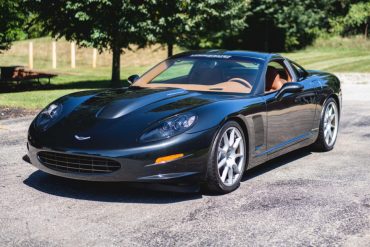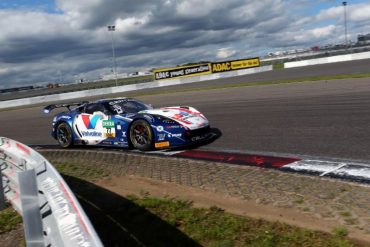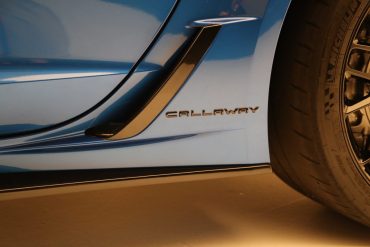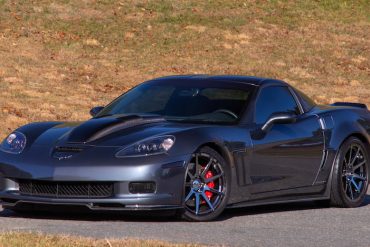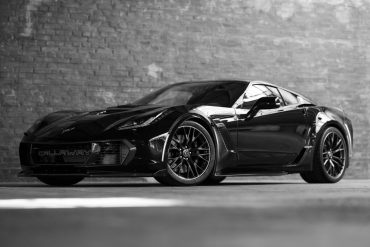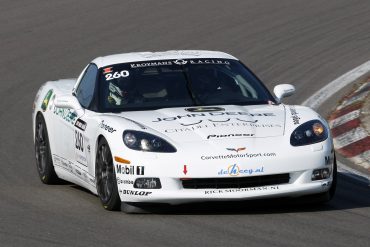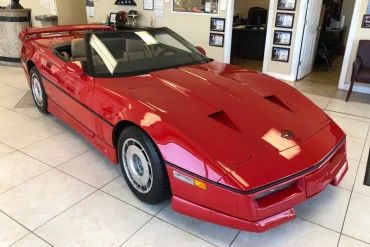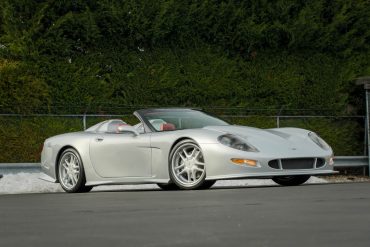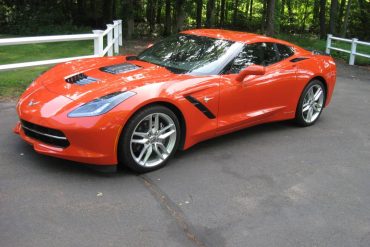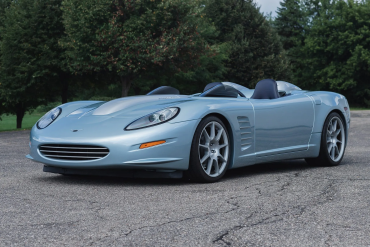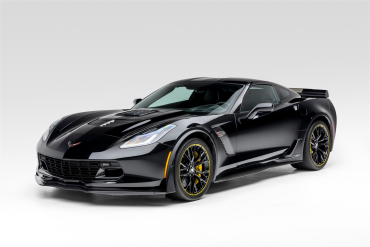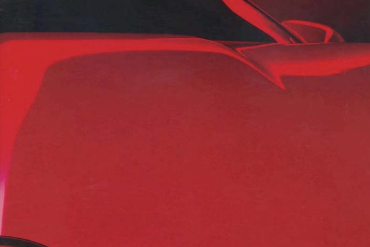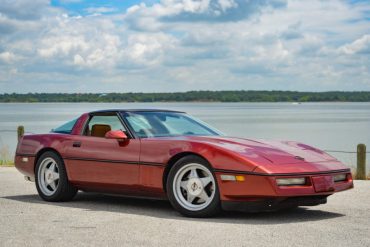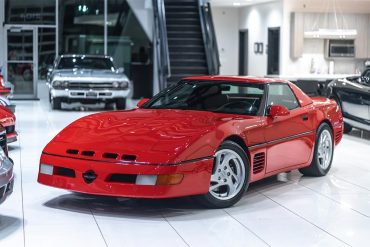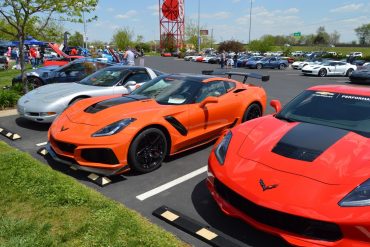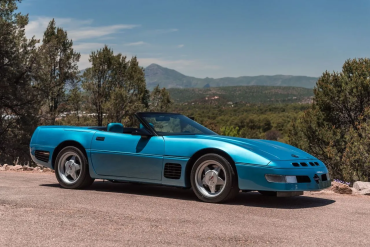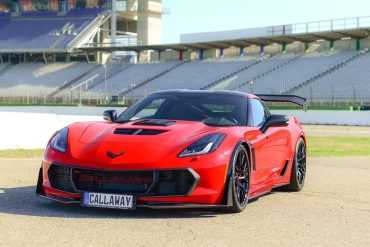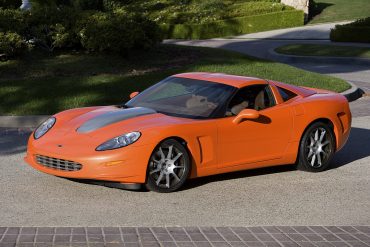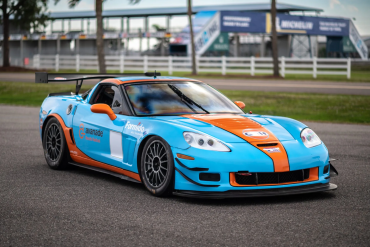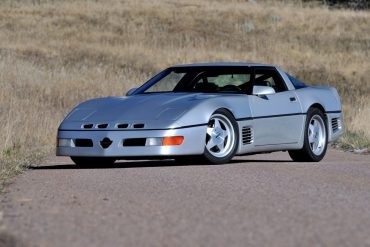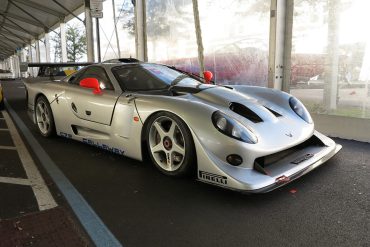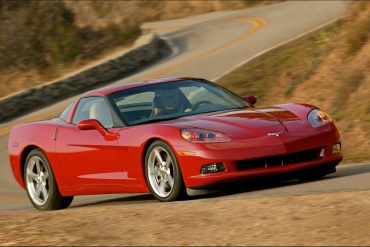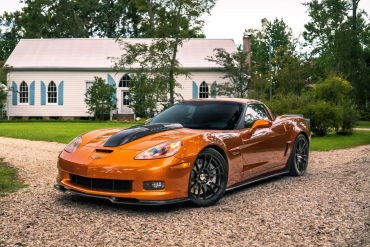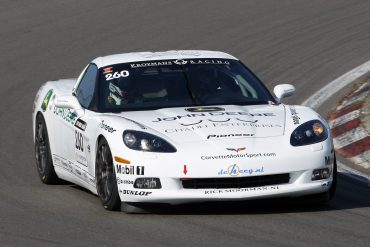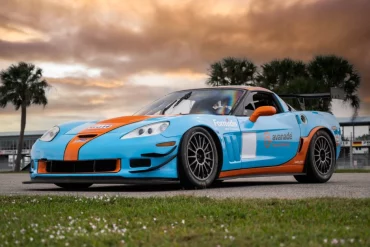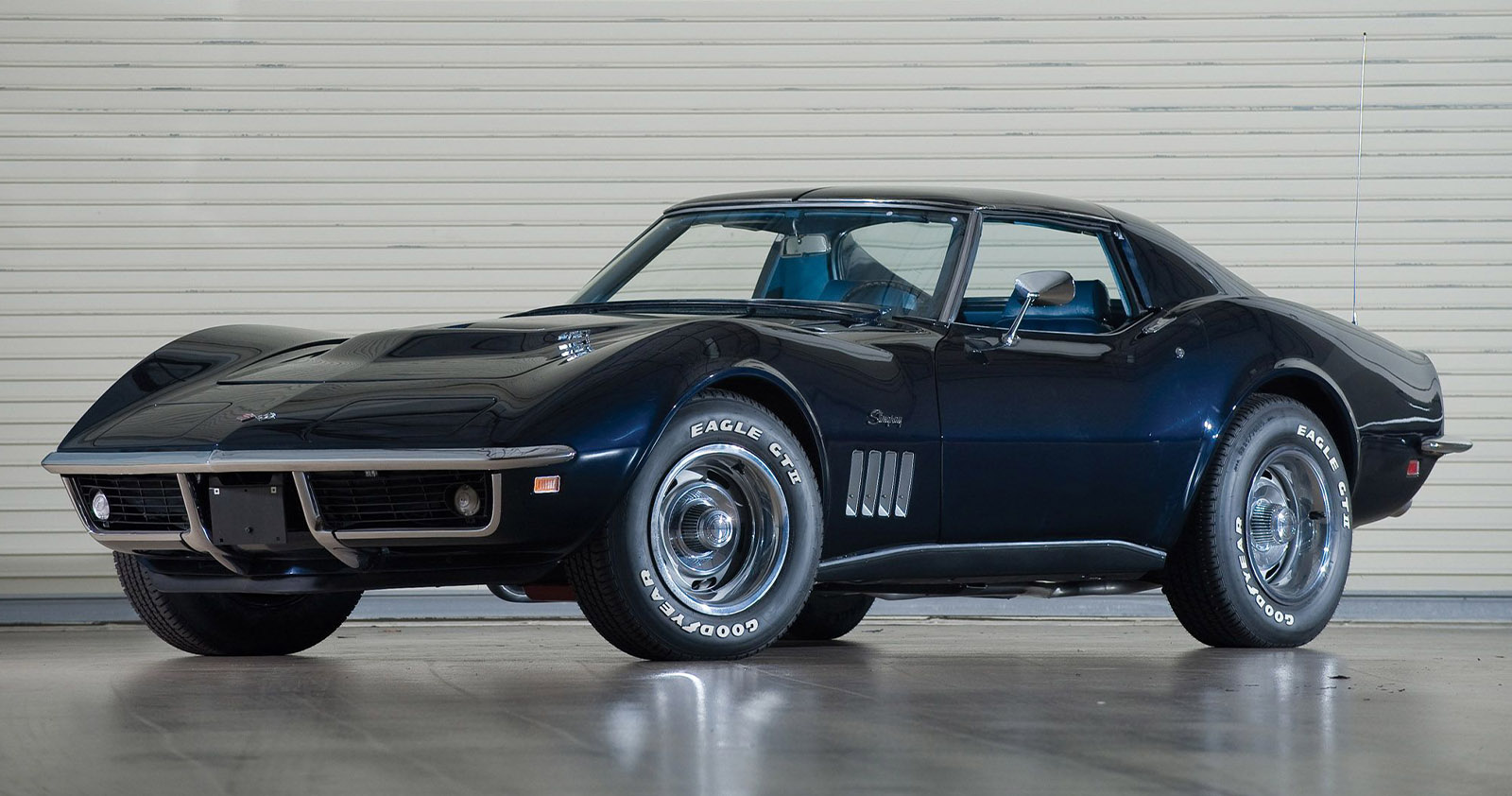FOR SALE: An Extremely-Low Mileage 2007 Corvette Callaway C16 If you’ve ever been to a local cruise-in, Cars & Coffee,...
German Driver Daniel Keilwitz to Pilot Callaway Corvette at Pirelli World Challenge The 2018 Pirelli World Challenge, North America’s top...
Callaway, as many Corvette fans know, has done some fairly insane things with our beloved muscle cars in the past....
To commemorate its quarter-century milestone, Callaway Cars collaborated with Chevrolet, arranging a production run of 25 uniquely prepared 2012 Corvette Grand Sport coupes and convertibles. General Motors supplied special parts and procedures on the Bowling Green production line to facilitate final assembly at Callaway factories. Then, the performance and identity components are installed by Callaway. The 25th Anniversary Edition produced 620 bhp and 555 lb-ft of torque.
The 25th Anniversary Edition is a hardened up version of Callaway's Corvette SC757, which in turn is based on a C7-generation Corvette Z06. It features a supercharged V8 that pumps out 757-horsepower and 777 pound-feet of torque. The supercharger is a GenThree Callaway unit with the company's TripleCooled intercooler system. A high-flow intake system feeds that beast. Callaway's Level Two HD Cooling System also helps it avoid the overheating issues that plagued C7 Z06s.
General Motors introduced the 2008 Corvette C6 GT4 that they used to compete in that year’s FIA GT4 Championship. The...
Offered from 1987 to 1991, the RPO-B2K upgrade was available from any Chevrolet dealer and also Callaway’s first major Corvette tuning program. Together, GM and Callaway made the upgrade package a Regular Production Order (RPO) which was the first time GM had outsourced such an option to a specialist manufacturer. It even had a factory back warranty. As the C4 updated, so did Callway’s program and by 1988, the B2K was pushing 382 bhp and 562 ft. lbs. of torque.
Callaway has built a firm reputation for producing some of the most sophisticated and advanced Corvette-based automobiles. Introduced in 1998,...
As we venture around the internet in search of fun Corvettes for sale to highlight, we couldn’t really avoid this...
In August 19, 2007, Callaway Cars unveiled the C16 Speedster, the third and flagship model in the C16 lineup, on...
The C7.R Edition Z06 Corvette was specifically designed as a direct tribute to the Corvette Racing C7.R race cars. The...
Download this 1988 Corvette Dealers Sales Brochure for a quick look at the features of the car. The handling and performance of the Corvette Coupe is uncompromised. Yet the comforts and appointments are luxury-class. It is not surprising that the critics have called...
This Callaway Corvette Could Be Yours By the End of the Week! Our friends at Bringatrailer.com frequently post some truly...
Chevrolet's introduction of the LT1 in 1992 as the base engine in the Corvette phased out the L98 based Callaway Twin Turbo. Previously, Callaway Corvettes made their increased power through positive manifold pressure; now they made it through increased displacement and finesse. Initially called the CL1 or CR1, they designated the chassis they were built upon. They were based on the pushrod LT1 cars (CL1) or the 32 valve DOHC LT5 ZR-1 cars (CR1).
Corvsport.com Takes a Look Back at 2018! The past twelve months have seen a lot of exciting changes in the...
In 1989, Callaway introduced a Speedster which was culmination of their styling, engineering and trimming talents. Nothing about Callaway’s Speedster...
Callaway has been building special edition Chevrolet Corvettes and racing in GT class motorsport for what feels like ages; 25...
The Callaway C16 was Callaway’s 16th major automotive project. It was a limited production, bespoke automobile, built to order, by what the Press called “the best specialist engineers in the business”. These cars are seriously fast, beautiful, and exclusive. The C16 was a direct competitor for the Porsche GT3, the Lamborghini Murcielago, the Ferrari 599 GTB. It was both faster and more capable than its competitors, at less cost.
When Chevrolet changed gears to the LT1 engine, Callaway revealed their new SuperNatural line and the CR1 based on the ZR1’s LT5. Options for the CR1 included the radical Aerobody, German upholstery and special wheels, brakes and exhausts. The CR1 used a larger displacement to produce either 475 or 490 bhp.
This 2009 coupe is reportedly 1 of 5 Corvettes built by Chevrolet exclusively for track use by Callaway Competition. All...
This Sledgehammer reached 254.76 mph at the Transportation Research Center (TRC) in Ohio and became the world’s fastest street-legal car for some time. It was built up by Reeves Callaway in Connecticut as an example of what was possible with the new ZR1 and and turbocharging its LT5 engine. The result was a 898 bhp coupe that still retained luxuries such as air conditioning and a radio. It got this power by using a NASCAR-spec block with Mahle pistons and a massive turbo.
The Callaway C7 was a completely new, purpose-built car designed to embody the company’s motto: “Powerfully Engineered Automobiles”, carrying on the visual tradition of design by Paul Deutschman and offered in a limited production series. The C7 was the first complete, bespoke Callaway Automobile. This sportscar was equipped with a carbon chassis, front mid engine/rear transaxle design, 650 horsepower SuperNatural engine.
The Models To Buy If You’re Buying Your First Collector Corvette. You Can’t Go Wrong With These Classics. Collecting Corvettes...
Bring a Trailer is currently offering a chance for all Corvette enthusiasts to snag a stunning C6 Corvette Z06! This...
In late 2007 Corvette Europe approached the FIA seeking approval to race a C6 Coupe in the GT4 category. After much study the FIA approved their request. Kroymans shipped a new 2008 C6 Z51 six-speed coupe to Callaway Competition in Leingarten, Germany. In less than six weeks the Callaway team stripped the new car of all non-essential parts including carpet and standard seats.
The best way to introduce this rare Corvette is by quoting Reeves Callaway’s post from the Bring A Trailer listing:...
No More Content


